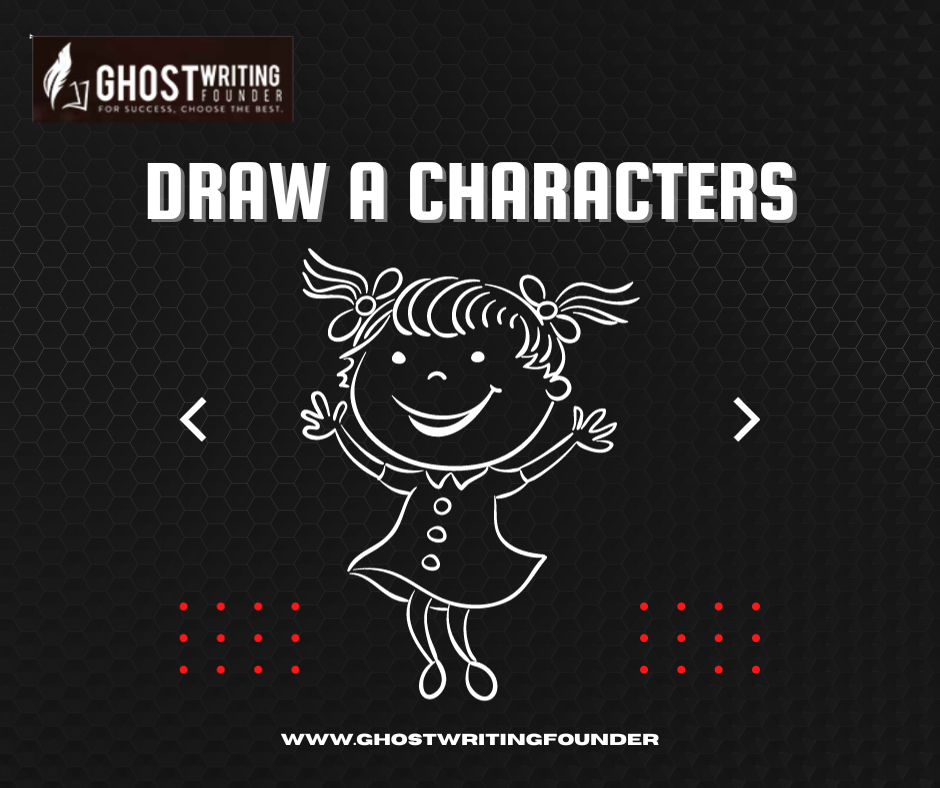
book writing
There’s much to take in when you’re learning to draw characters. You have the physical traits, the personality traits, and the background information for each character you want to create.
Drawing is a skill that anyone can learn. The only way you’ll get better is by practicing, so don’t be afraid to experiment with different styles and techniques.
If you’re a creator who wants new ideas to start drawing characters that fit your idea, here are 10 of the biggest and best drawing tips to get you started.
We’ll start with the basics: drawing characters from scratch. You might think this sounds easy, but it’s actually quite difficult! If you don’t have any artistic background, it can seem like an insurmountable task. But don’t worry—we’ve got your back! We’ll show you how to draw characters in simple steps that make sense even if you’ve never picked up a pencil before (and if you have, there’s still something here for you!).
10 Best Drawing Tips for Beginners:
Artists from Ghostwriting Founder make character design ideas to learn more about a character’s personality through their appearance, whether they are making anime, cartoons, manga, video games, mascots, or comic book characters.
Well-designed characters are recognizable and help keep people watching and moving the story along.
Starting with the Basics:
To commence your artistic journey, initiating with an understanding of basic shapes and proportions is imperative. To draw characters, whether a gallant superhero or a simple cartoon, emanates from basic geometric shapes – circles, rectangles, and triangles.
These shapes serve as the skeleton upon which the flesh of details and personality are added. Additionally, comprehending proportions, especially when drawing human or humanoid characters, ensures a realistic and relatable portrayal of figures.
Your Character’s Story:
As the person drawing the figure, you should know everything there is to know about them, just like the writer does.
You should make a design for your character that shows their personality and past and present situation before drawing them. That way, your character will have a place in its world and a unique identity. Little things can make a big difference when you’re doing this.
Small, hidden details in your drawing can add a whole new level to your story and give your character much more depth that people enjoy. When drawing characters, use colors, shapes, and symbols to give them meaning and reveal a story.
It’s these little things that can make your drawing great. But while this tip can help you draw more creatively, it’s also essential to use it sparingly.
Combine and Mix Your Shapes:
In the beginning stages of learning to draw figures, giving them as many unique looks as possible is helpful. This will help them stand out from all the other material out there. So, be creative when you draw your figure!
There are always new thoughts out there. Using your imagination and point of view when you draw characters makes your ideas feel new and different. That is what will keep people interested and catch their attention.
The Vitality of Facial Features:
Expressions give your character’s life, turning them from flat pictures into real people with feelings and personalities. You need to know much about facial anatomy to show how you feel.
Look at the eyes, eyebrows, lips, and the slight curves they make when showing different feelings. By paying attention to these small details, artists can give their figures life and soul.
Making your drawing into an outline or shadow can help you see if you’re going in the right direction. You can then check to see if their unique traits, besides their faces and expressions, can still be recognized.
This can help you decide if they’re unique enough to stand out from other characters in your story or those already out there.
When you draw characters, always make them into silhouettes and use the “squint test” to see if you can tell what their outlines look like. You should work on it more if it gets messy or weird. Make your figures’ hairstyles, clothes, heights, and widths bigger than they are so that their outlines stand out.
Mastering the Art of Color Theory:
Color isn’t just a matter of taste; it’s also a powerful way to communicate mood, feeling, and story. Understanding color theory is important because it lets you choose color schemes that make people feel how you want them to.
Learn about the effects of complementary and similar colors and how to use them to help your characters express themselves and help you reach your story goals.
Show All of Their Sides:
To give your character a complete feel and look, you should draw every part of them. When you Draw characters in stories, they will stay the same no matter what they are doing or what angle the audience is looking at them from because you gave them all these different looks.
Most character designers and artists will show the character in more than one drawing, each with a different look on their face, body, clothes, and other things. Also, they will make a “character turnaround,” a full-view video of each character.
Implementing Lights and Shadows:
The interplay of lights and shadows not only introduces a three-dimensional aspect to your characters but also assists in establishing mood and atmosphere. Absorb the knowledge of how light interacts with different surfaces and shapes.
Understand the impact of various light sources on your character. This skill will elevate your characters from flat drawings to dynamic, realistic beings.
Learning About Movement and Anatomy:
Characters move, feel emotions, and connect with the world around them. A basic understanding of anatomy and movement will help you make figures that look like real people and move and talk in a way that makes sense.
Know the basics of how muscles and bones work, and watch how people move in real life to give your drawings fluidity and reality.
Background and Environment:
There is no void where your figures live. The background and surroundings are not just extras; they are essential to setting the scene for your character and giving you information about their personality, world, and situation. Environments tell stories that are important for character development.
For example, a cluttered room can show that a person is confused, and a calm beach can show that a person is calm.
Continuous Practice and Feedback:
Drawing characters is an ongoing process of learning. To improve your skills, keep practicing and ask others to critique your work. Ensure you share your work with communities that can give you helpful feedback.
Every stroke, mistake, and correction is a step toward becoming a skilled character artist.
Essential Elements and Detailed Insights
| Concept | Details | Tips |
|---|---|---|
| Physical Traits | Basic shapes and proportions, facial features, and anatomy. | Use geometric shapes as a base; focus on facial expressions and anatomy for realism. |
| Personality & Background | Character’s story, environment, and unique identity. | Design characters to reflect their personality and background; consider environment impact. |
| Drawing Techniques | Experimenting with styles, mastering color theory, lights, and shadows. | Practice different styles; understand color impact and light-shadow interplay. |
| Character Uniqueness | Combining shapes, silhouette testing, and character turnarounds. | Mix shapes creatively; use the “squint test” for silhouettes; create detailed turnarounds. |
| Emotional Expression | Facial expressions and body language. | Study facial anatomy; observe real-life movements for authentic expressions. |
| Storytelling Through Art | Backgrounds and environments as narrative tools. | Use backgrounds to add depth to the character’s story; ensure consistency in environments. |
| Continuous Improvement | Practice, feedback, and correction. | Draw regularly; seek critiques; learn from mistakes for skill enhancement. |
Conclusion:
The key is practice; you need to keep drawing every day. Don’t worry if your drawings don’t look perfect at first; that’s natural. It is important to keep going until your artwork looks how you want it to.









Leave a Reply